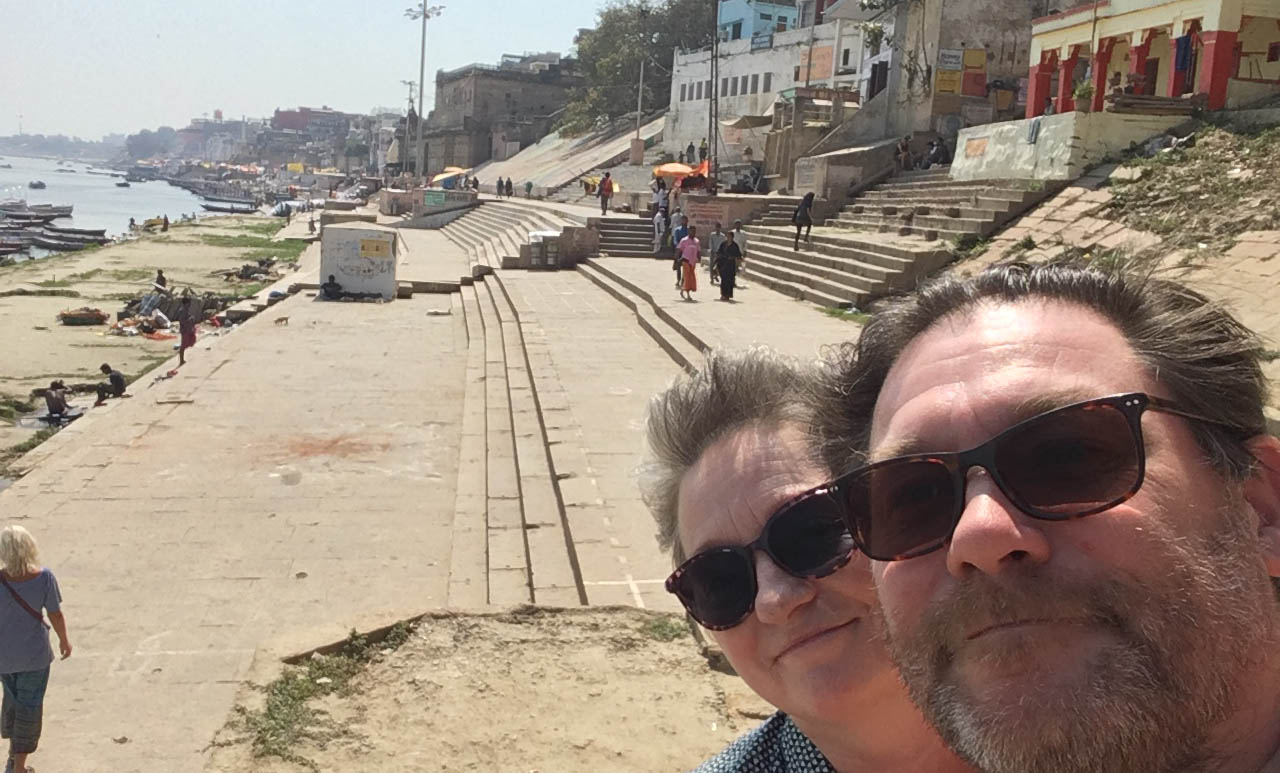Monday 4th to Wednesday 6th March 2019
Initially, we were aware that out eight hour flight from London to New Delhi was going to be extended by two hours because it was being diverted around Pakistani airspace, via a longer route to the south. You may have seen in the news over the last week that tensions are raised in the area of Kashmir, and as a result the Pakistani government closed their airspace to all aircraft.
But we were then made aware of a technical problem with our plane [a little worrying] which resulted in a two hour delay taking off from Heathrow.
By the time we reached New Delhi (14 hours later including delays) we were already feeling over-travelled and sleep-deprived and decided we would not be able to give any one of the extraordinary sights of this city the attention it deserved. We will be returning several times during our time in India when we will be able to plan visits to places such as the Red Fort, the Jama Masjid mosque and Humayun’s tomb.
At New Delhi Station we arrived from the airport on a very sophisticated metro line, to be bombarded by atmosphere of the Indian capital.
New Delhi is not a station for the faint hearted, with people constantly in your face to give you ‘help’ or ask for ‘help’. You don’t have time to think or look about without someone trying to ‘help’ you.
We made the mistake, and yes we have done it again, here at Varanasi, of going out of the station through the wrong exit. It might look like the main exit, with hundreds of tuk-tuks lined up but it turned out to be the back entrance.
It took a little while of contemplation in a Burger King, with a restorative coffee, to realise that if we took the foot bridge over 16 platforms we would reach the correct side complete with boards proclaiming the planned departures and arrivals. We appreciate that Burger King is not exactly a local coffee shop but surprisingly there was very little choice for a main railway station.
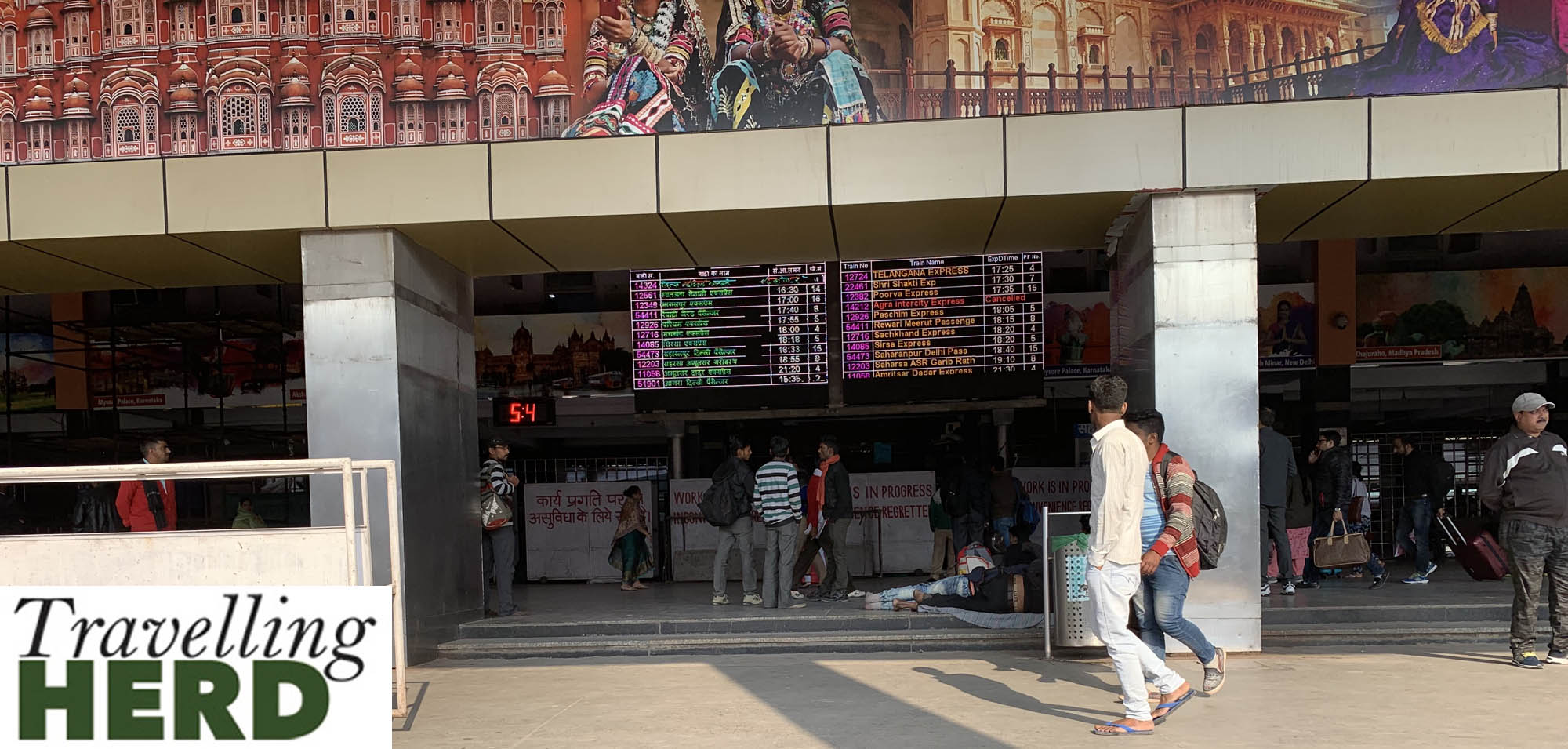
Instead of embarking on sight-seeing, as so much of this holiday depends on train connections, we wanted to develop a sound understanding of the railway system. So we simply sat in the warmth of the sun, watching the comings and goings, and absorbed the sounds, sights, and smells of our first day in India while we waited for our sleeper train to Varanasi. A constant cacophony of motor horns and playground whistles [intended to warn vehicles to move on] provided the soundtrack to the sight of women in beautiful vibrantly coloured saris and scarves and the smell of the “luxury toilet and baths”, which was frankly more sewage than luxury.
We had decided against getting rabies vaccinations as we were not expecting to pet any dogs. There are however many, many stray dogs around New Delhi station and no doubt across India. In general they ignore people unless they recognise someone who habitually feeds them and often curl up to sleep in the middle of the road despite the horns and whistles. They are lucky that the Hindu religion believes in the sanctity of all life. These dogs are used to being ignored and walk close by you yet are uninterested in most people and remain entirely separate.
Periodically something makes one of them bark, adding to the noise levels, possibly as a warning or an invitation to food and others will come running and barking to join in.
Matilda is already committed to being more involved with planning future trips following the rather tortuous route home from Iceland. This resolve was reinforced by Robert’s over-enthusiasm for travel which prompted him to forego the first overnight stay in a hotel for a sleeper train. We will be implementing this new approach to planning before the forthcoming round the world trip in 2020.
We had hoped for slightly more creature comforts from our first class berth on the sleeper train from New Delhi to Varanasi. Matilda had visions of Victorian regal splendour but she was destined for disappointment. Forty minutes before the train was due to depart platform 13 was literally crammed with hundreds of people of all ages who were preparing to fight for a seat. Not all would succeed. The train arrived at the station very sedately and some of the more enterprising would-be passengers jumped onto the running plates and held on to the handles either side of the doors to make sure they were first aboard.
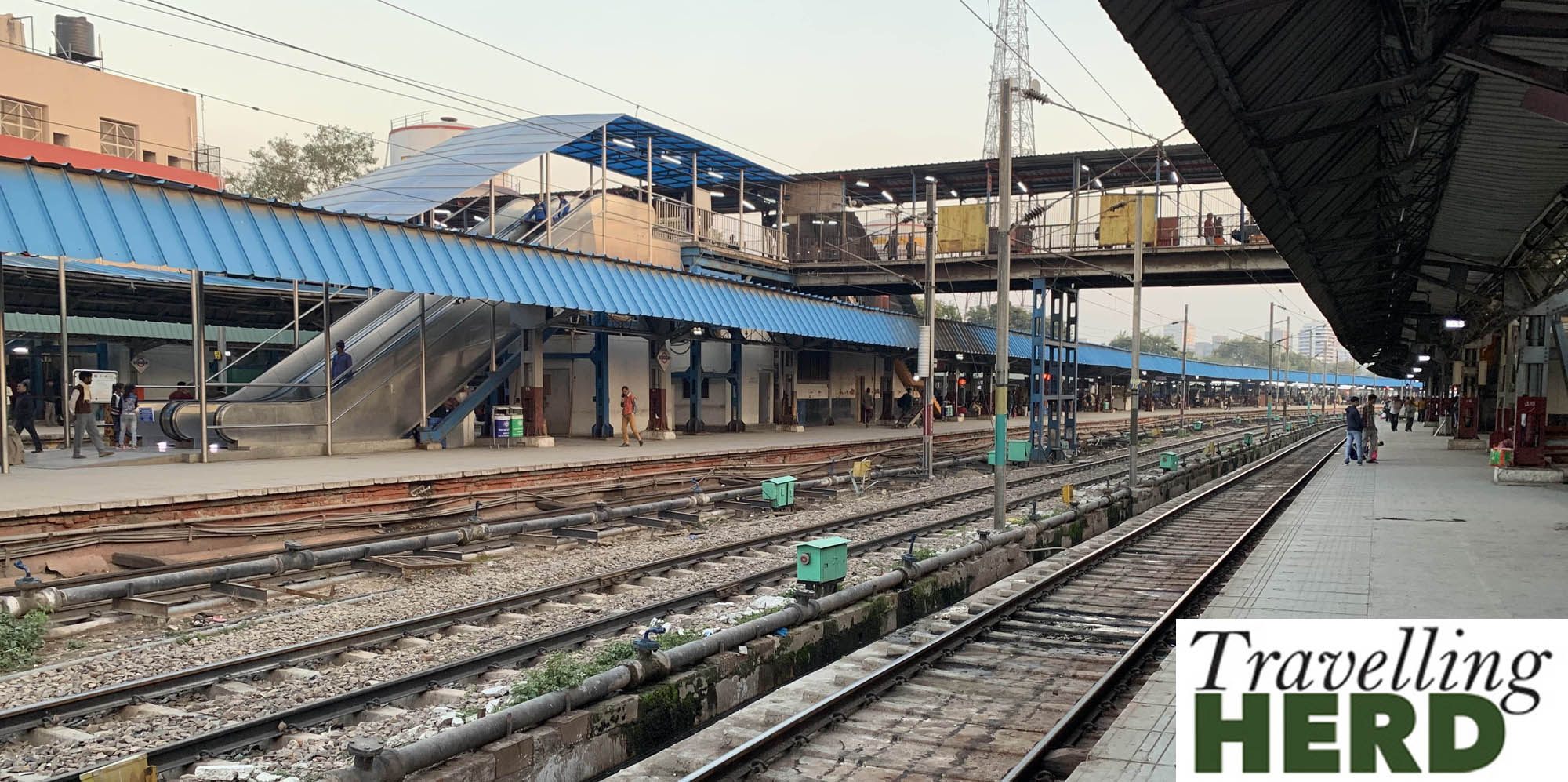
Robert plans to share some videos of this phenomena later in the trip, including photos of Second Class. There are eight classes of travel on Indian trains, and Second Class (unreserved) is the eighth and lowest.
Earlier we had watched a sleeper leave with doors open and people sitting with their legs nonchalantly dangling from the steps.
Usually an electronic display board lists passengers’ names with their seat/berth number but unfortunately, this did not appear for our train. A few queries later and we were incredibly relieved when the train manager identified our two person cabin, even if it had been temporarily occupied by someone else in error.

Robert had seen two men getting ready to prepare food close by and as the guide books advise only eating street or train food which you have seen cooked or know to be freshly prepared we decided to embrace the experience, see below, and chose the vegetarian option.
Shortly after installing ourselves in our compartment Robert noticed a mouse running along the floor under the window. Our initial thought was to encourage it into the corridor. But we then realised that it was migrating between compartments. Another sighting was confirmed though whether it was the same mouse or a family member is uncertain. We considered blocking the entrance but feared such an obstruction might make them/him/her more likely to climb vertically rather than foraging horizontally. So we resigned ourselves to having sporadic uninvited overnight visitors.
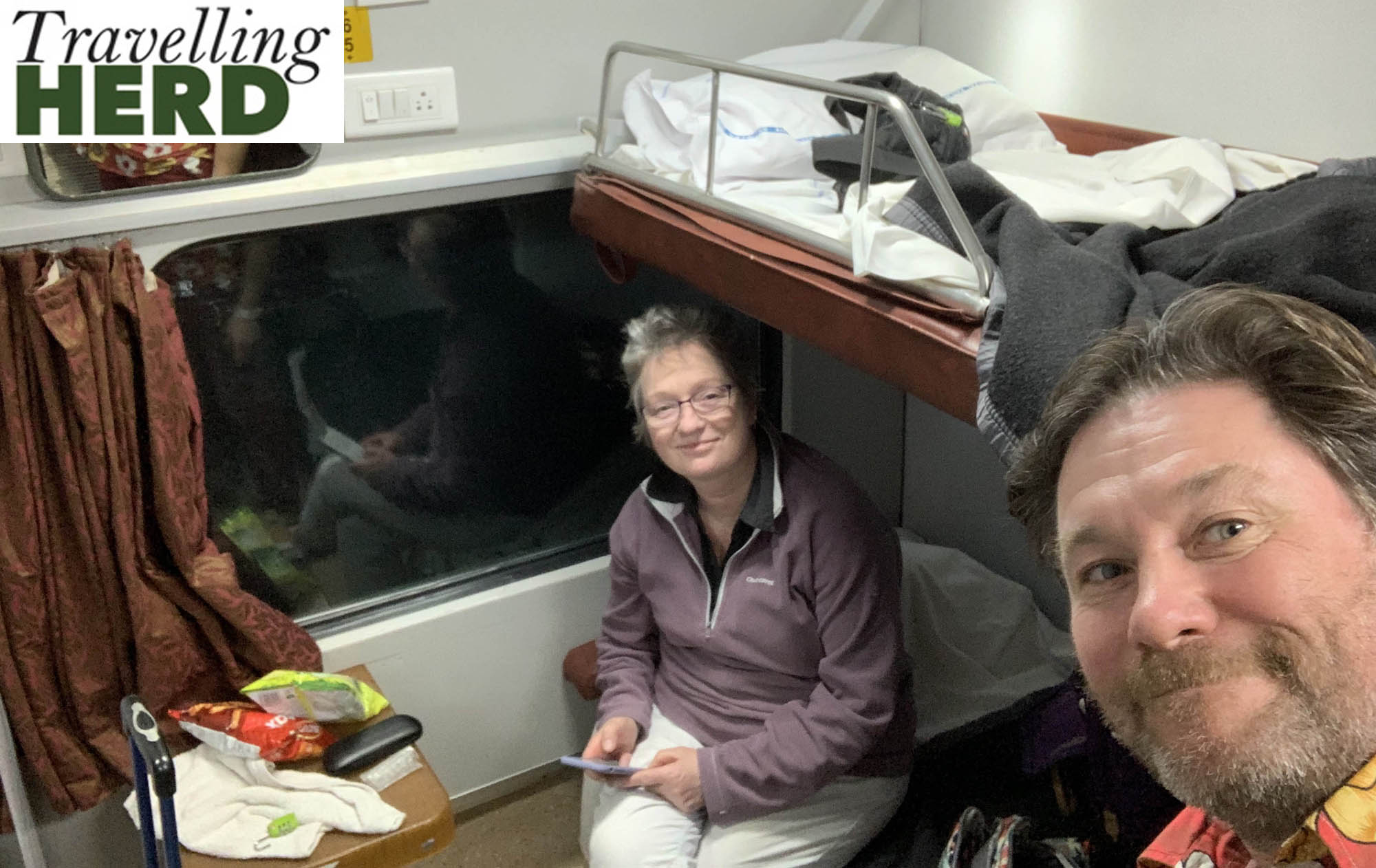
Robert’s enthusiasm for train travel was [very] diminished when Matilda told him that drinking beer is forbidden on Indian trains. So for this trip we will be keeping a tally of “dry days” and 5 March was beer free day #1. Robert admits that at the start of this trip he is 14s 1lb, let’s see how he fares with restricted alcohol and the potential Delhi-belly.
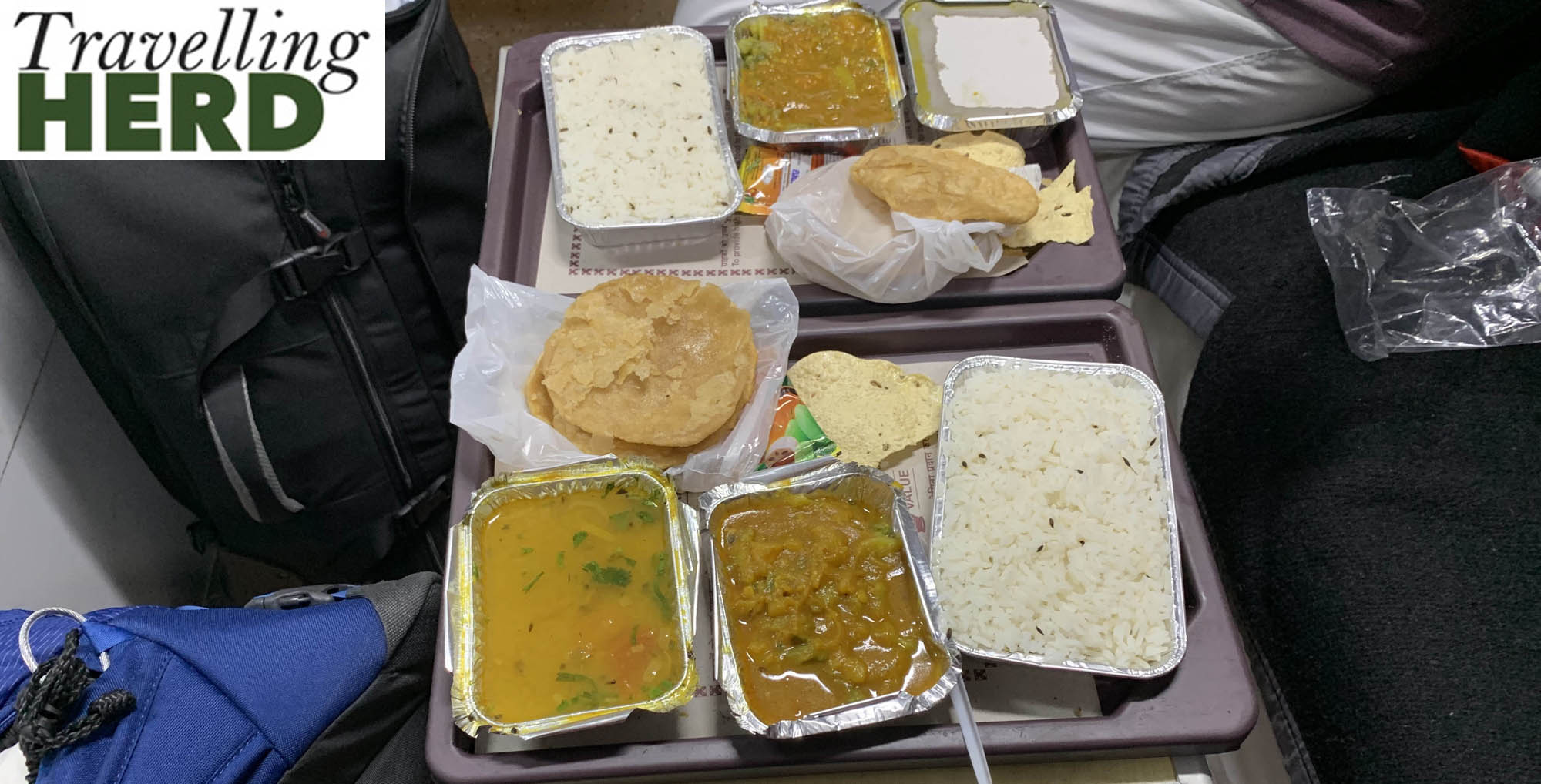
Luxury is not an absolute but is, it seems, more a matter of comparison.
There are situations in which having a compartment to yourself, with laundered linen and a lockable door seems like luxury indeed even if sleep itself is rather illusive and there is the possibility of uninvited rodent visitations.

We habitually walk round the places we visit but it is becoming obvious that this won’t often be feasible in India. There are very few pavements and the traffic is alarming. The most obvious rule seems to be give way to the person sounding their horn the loudest and most insistently. Crossing the road takes real courage.
Having checked into our hotel and been welcomed with flower garlands, which matched Robert’s fleece, and a glass of chilled lemonade we decided to get a tuk-tuk to the banks if the Ganges river to see the many ghats in this, India’s most holy city for Hindus. Essentially ghats are steps built down to a river bank.
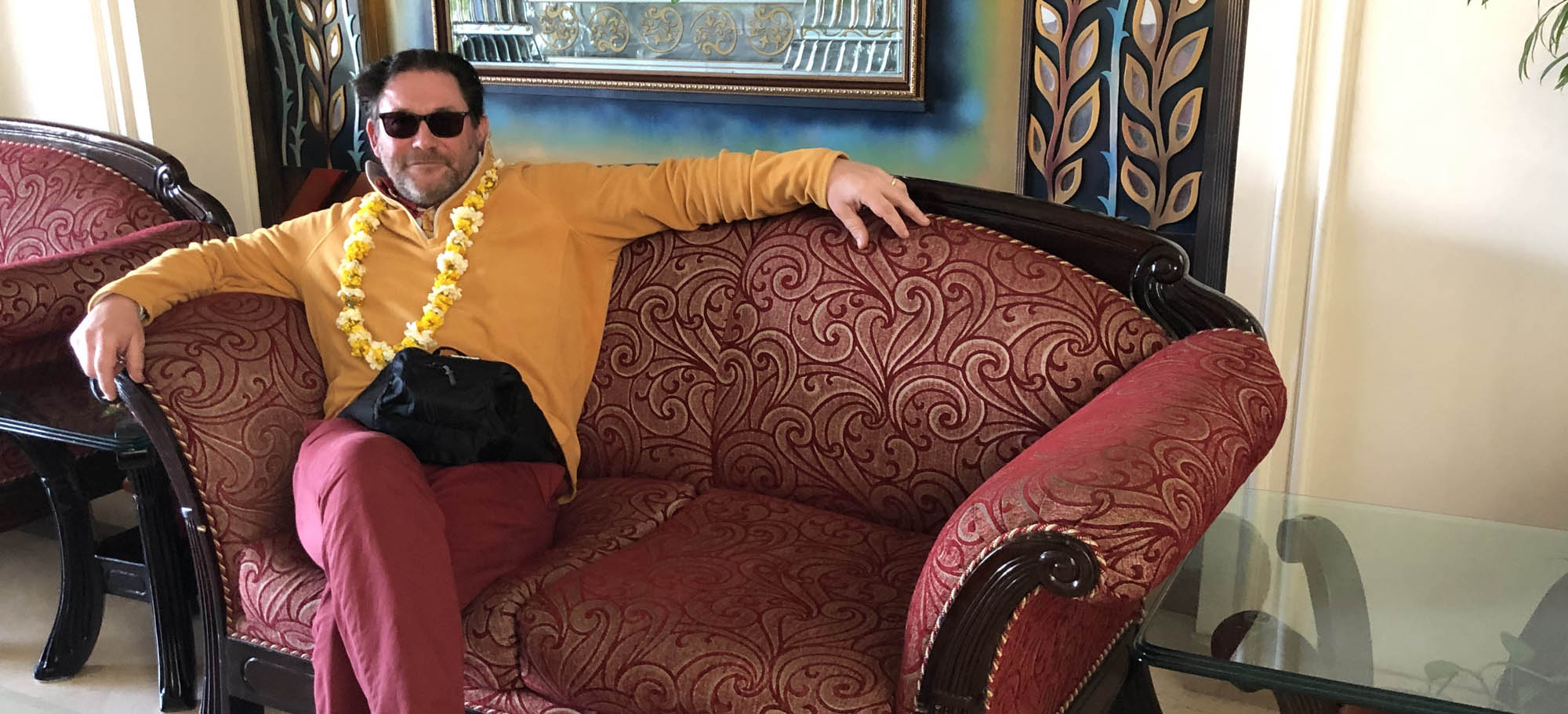
Tuk-tuk drivers seem to come as a double act with one who touts for business and one who drives.
Even though the ride itself veered between hilarious and hair-raising we were glad we had chosen to travel by tuk-tuk as walking would have risked life and limb.
The banks of the sacred Ganges themselves were relatively quiet after the tuk-tuk ride. We were introduced to a third member who offered a boat ride out to see the smouldering remains of a funeral pyre but this seemed rather disrespectful and we chose to walk along the bank, past religious devotees, tourists, cattle and monkeys.
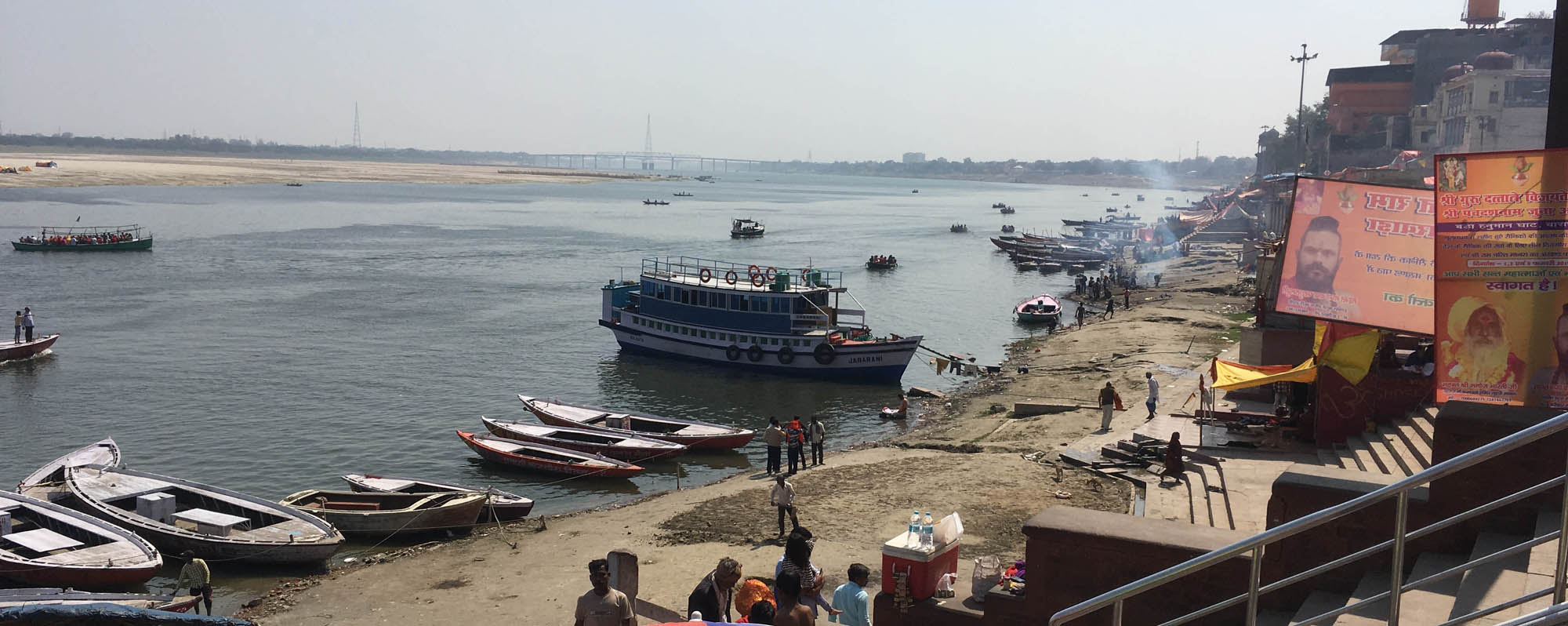
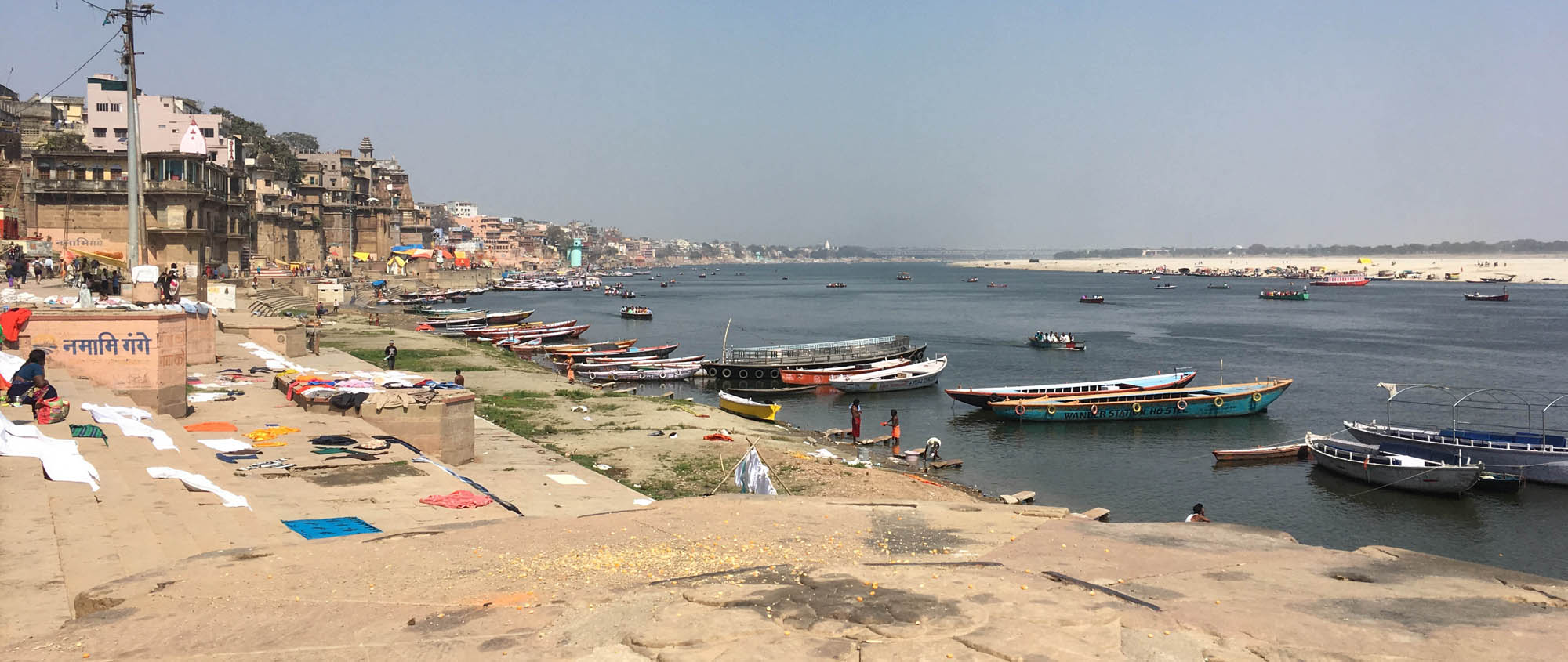
In the spirit of helpfulness, and possibly with an eye on the tourist money, our self-elected tour guide kept suggesting extra pleasures, offering first to take us to the Moghul city. He also offered to book Robert a massage at a place conveniently situated behind the hotel. Who knows whether this would have come with “extras” but as Robert hadn’t understood the offer he declined before he realised the missed opportunity.
Current Route Map:

Selfie of the day:
